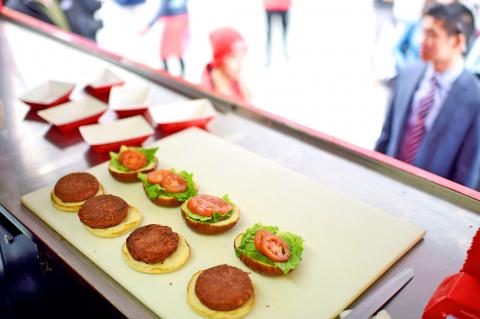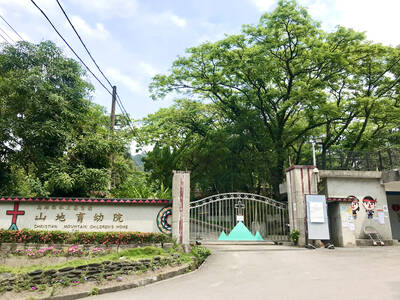You can call it an overreaction to some bad soy headlines, or chalk it up to concerns about the environmental impacts of meat. Either way, it’s hard to ignore the food industry’s new favorite protein source: peas.
Earlier this month, meat-substitute producer Beyond Meat made IPO history when its shares nearly tripled in value on their first day of trading. The company’s vegan burgers and sausages are leading the fake meat revolution, with the pea as their star ingredient. The protein from the legume has surged in popularity, especially among manufacturers of meat, dairy and seafood substitutes.
Beyond Meat’s pea-based offerings are joined by the new Lightlife burger, which arrives in US supermarkets this month. There’s also Ripple Foods, with a line of pea-based dairy substitutes. These foods also use peas: JUST’s eggless egg products, Good Catch Foods’ fish-free tuna and UK-based Nomad Foods’ Green Cuisine line that includes meatless burgers, sausages and Swedish meatballs.

Photo: AFP
With peas becoming such a hot commodity, big players are preparing to ramp up supply. Global pea protein sales will quadruple by 2025, says Henk Hoogenkamp, an adviser and board member for several food companies, with most of the increase stemming from more consumption of plant-based meat products.
Peas thrive in northern climates, and Canada is expected to become the global production leader and account for 30 percent of output in 2020, Hoogenkamp says. New processing facilities are being built there, as well as in France, Belgium and Germany. Agriculture giant Cargill has an agreement with Puris, a producer of plant-based food ingredients, to significantly expand its pea protein operations. Some mothballed soy protein factories in China will probably be converted to pea protein facilities, Hoogenkamp says.
SECURING SUPPLIES
Companies are racing to secure supplies.
“You need to lock up your supply chain,” says Chris Kerr, founder of Good Catch and chief investment officer at private venture fund New Crop Capital. “It’s not a crisis, but you definitely want to plan ahead.”
In anticipation of its new products, Lightlife bought more than a year’s worth of the ingredient.
“We went really long on pea protein,” says Michael Lenahan, its vice president of marketing. “There was uncertainty at the time about how much would be available.”
Ripple Foods has created its own supply chain, working with farmers and developing its own proprietary process for cleaning the peas and extracting their protein. The peas are grown in North Dakota, Montana and Saskatchewan, Canada, before being processed in Northern Illinois.
Supply worries are likely to be short-term if demand continues to grow as projected.?
“I’m never too concerned about the supply of agricultural products,” says Peter Golbitz, founder of Agromeris, an agriculture consulting firm specializing in plant-based products. “They can expand production lines, or more competition enters the space. Making pea protein is not rocket science.”
Nonetheless, Beyond Meat is already looking to mix up its ingredients list.?
“Pea protein is an amazing resource for us, it works well, but there’s nothing particularly special about it,” Chief Executive Officer Ethan Brown says. “If you think about the plant kingdom, there are so many other stocks we can use — mung bean, brown rice, mustard seed, lentils. We will have a much more diverse bench of proteins.”
SOY’S BAD RAP
Ripple uses peas, its founders says, because they’re the most available plant protein that isn’t soy.
“Soy just has a bad consumer rap for no good reason,” co-founder Adam Lowry says. There is nothing keeping the company from using soy for products in other countries that do not have an aversion, like in Asia, they says.
And soy certainly isn’t disappearing in the US either: The increasingly in-demand and now gluten-free Impossible Burger uses it.
“The only reason pea protein became popular is because people didn’t want soy protein,” says Golbitz of Agromeris.
Even so, soy-loyal brands might be considering new strategies.
“We think the most important thing is choice, so we recognize certain people want to stay away from certain things,” said Kellogg CEO Steve Cahillane, whose portfolio of brands includes Morningstar Farms, during a January interview. “Our job is not to try and convince you as a consumer, you’re wrong, there’s nothing wrong with soy, go ahead and eat it — that’s not a winning strategy.”
Kellogg won’t reformulate existing products, but may look to create new ones for new niches that emerge, Cahillane says.
Pea protein could prove to have its own concerns, however. The Detox Project, a research organization that tests foods for the pesticide glyphosate, has been looking at it over the past year, and the results, like those for other products tested for the popular pesticide, aren’t pretty.
“We can hardly find a clean pea protein source anywhere,” says Henry Rowlands, the project’s director. In fact, products labeled as organic had much higher levels of the pesticide than conventional versions, he says. The group tested eight top-selling protein powders on Amazon, using a laboratory that’s approved by the California Department of Food and Agriculture.
In spite of this, the shift toward a new plant protein — especially one that hasn’t been genetically engineered to withstand a barrage of herbicides — is still a win for the environment, says Nathan Donley, a senior scientist at the Center for Biological Diversity.
“Any chance you have to break up these large commodity crop monocultures like corn and wheat and soy, it’s going to be such a benefit, even if it’s with a single other crop,” he says.

May 18 to May 24 Pastor Yang Hsu’s (楊煦) congregation was shocked upon seeing the land he chose to build his orphanage. It was surrounded by mountains on three sides, and the only way to access it was to cross a river by foot. The soil was poor due to runoff, and large rocks strewn across the plot prevented much from growing. In addition, there was no running water or electricity. But it was all Yang could afford. He and his Indigenous Atayal wife Lin Feng-ying (林鳳英) had already been caring for 24 orphans in their home, and they were in

On May 2, Chinese Nationalist Party (KMT) Chairman Eric Chu (朱立倫), at a meeting in support of Taipei city councilors at party headquarters, compared President William Lai (賴清德) to Hitler. Chu claimed that unlike any other democracy worldwide in history, no other leader was rooting out opposing parties like Lai and the Democratic Progressive Party (DPP). That his statements are wildly inaccurate was not the point. It was a rallying cry, not a history lesson. This was intentional to provoke the international diplomatic community into a response, which was promptly provided. Both the German and Israeli offices issued statements on Facebook

Even by the standards of Ukraine’s International Legion, which comprises volunteers from over 55 countries, Han has an unusual backstory. Born in Taichung, he grew up in Costa Rica — then one of Taiwan’s diplomatic allies — where a relative worked for the embassy. After attending an American international high school in San Jose, Costa Rica’s capital, Han — who prefers to use only his given name for OPSEC (operations security) reasons — moved to the US in his teens. He attended Penn State University before returning to Taiwan to work in the semiconductor industry in Kaohsiung, where he

President William Lai (賴清德) yesterday delivered an address marking the first anniversary of his presidency. In the speech, Lai affirmed Taiwan’s global role in technology, trade and security. He announced economic and national security initiatives, and emphasized democratic values and cross-party cooperation. The following is the full text of his speech: Yesterday, outside of Beida Elementary School in New Taipei City’s Sanxia District (三峽), there was a major traffic accident that, sadly, claimed several lives and resulted in multiple injuries. The Executive Yuan immediately formed a task force, and last night I personally visited the victims in hospital. Central government agencies and the